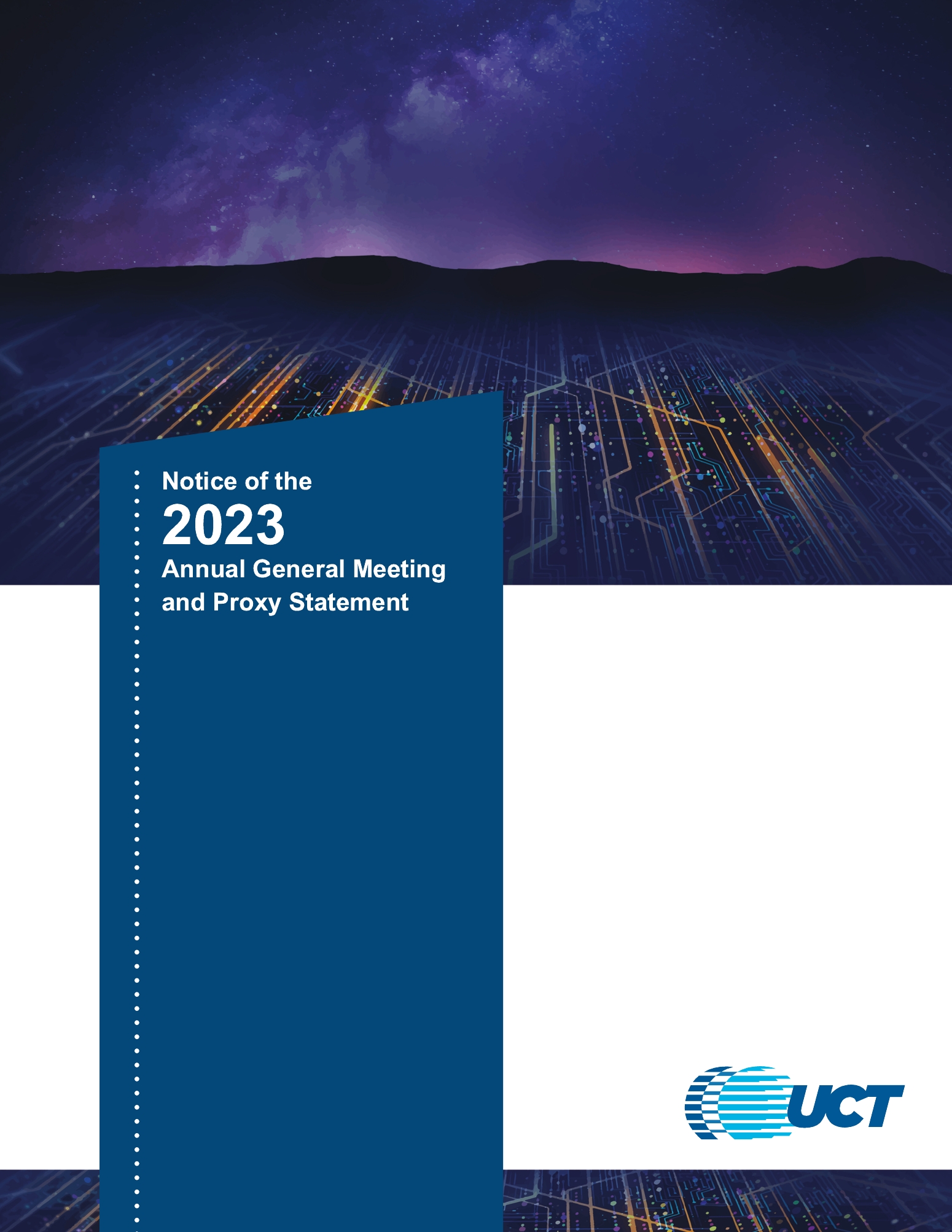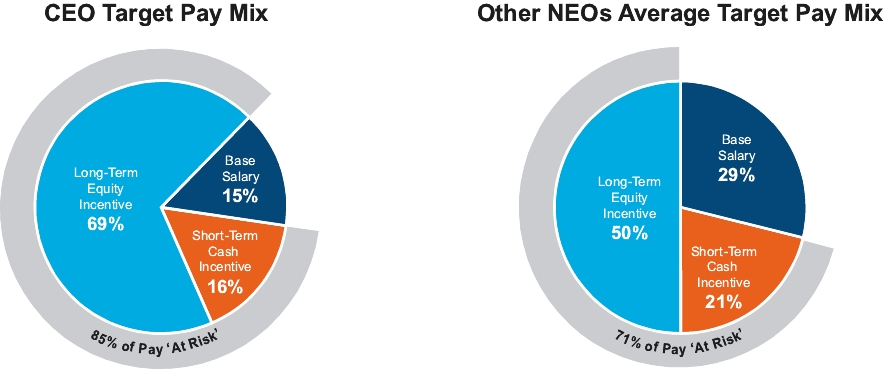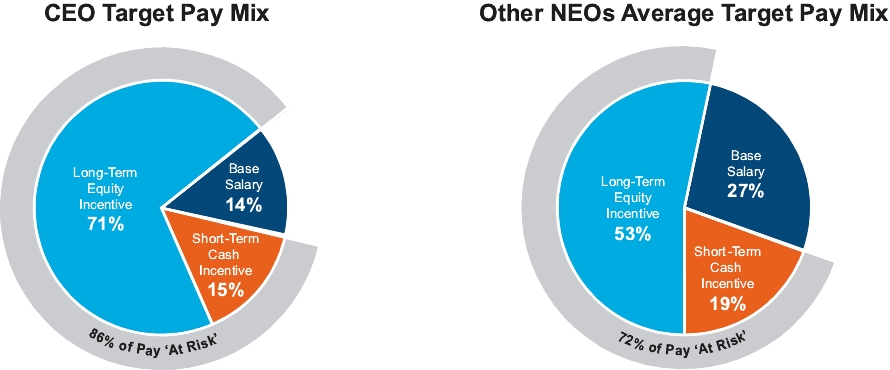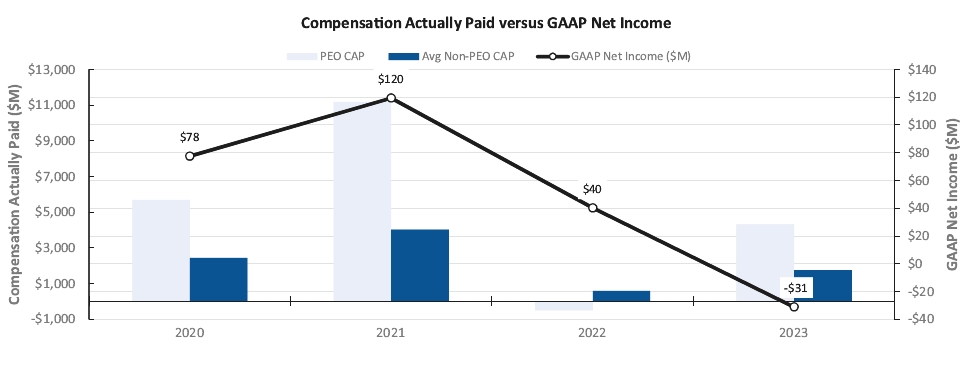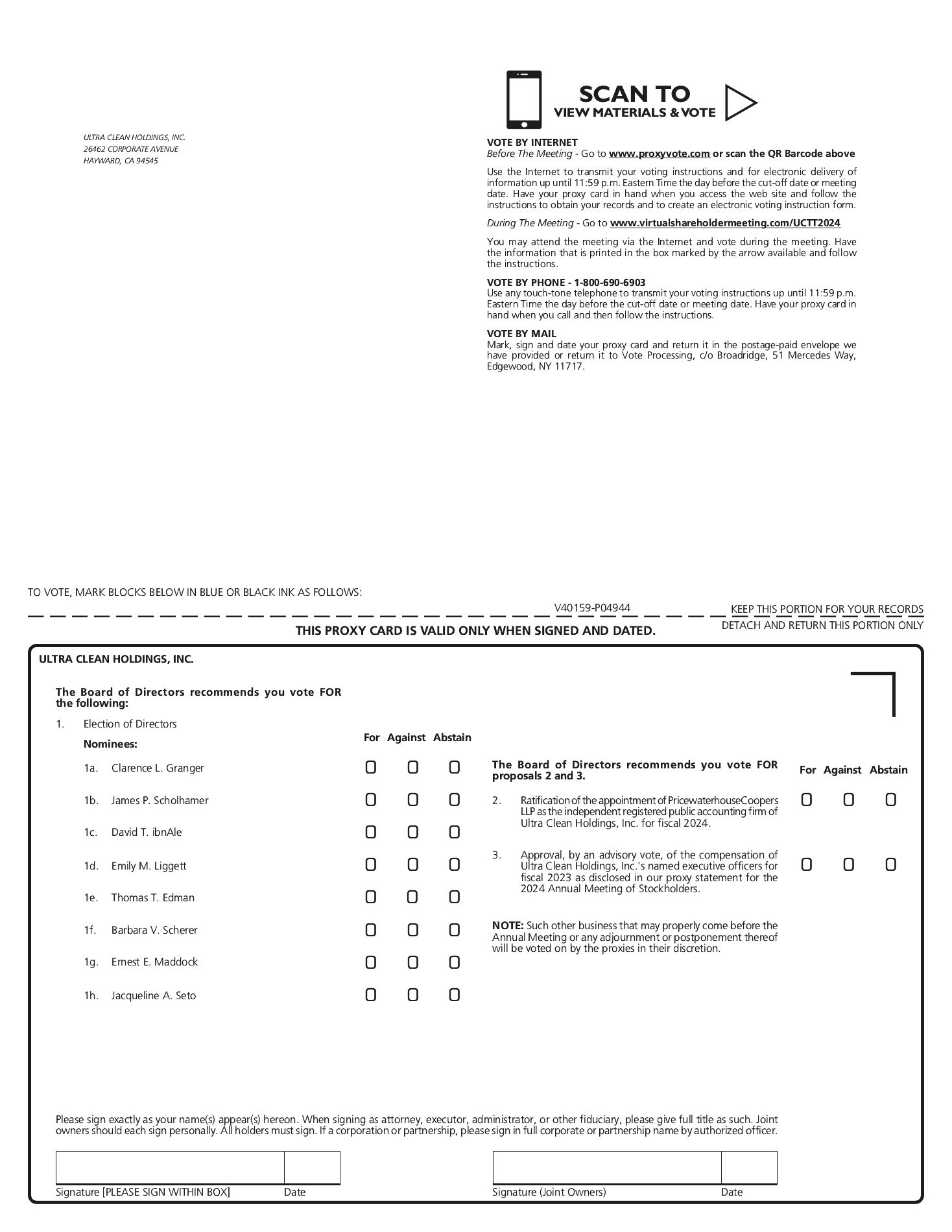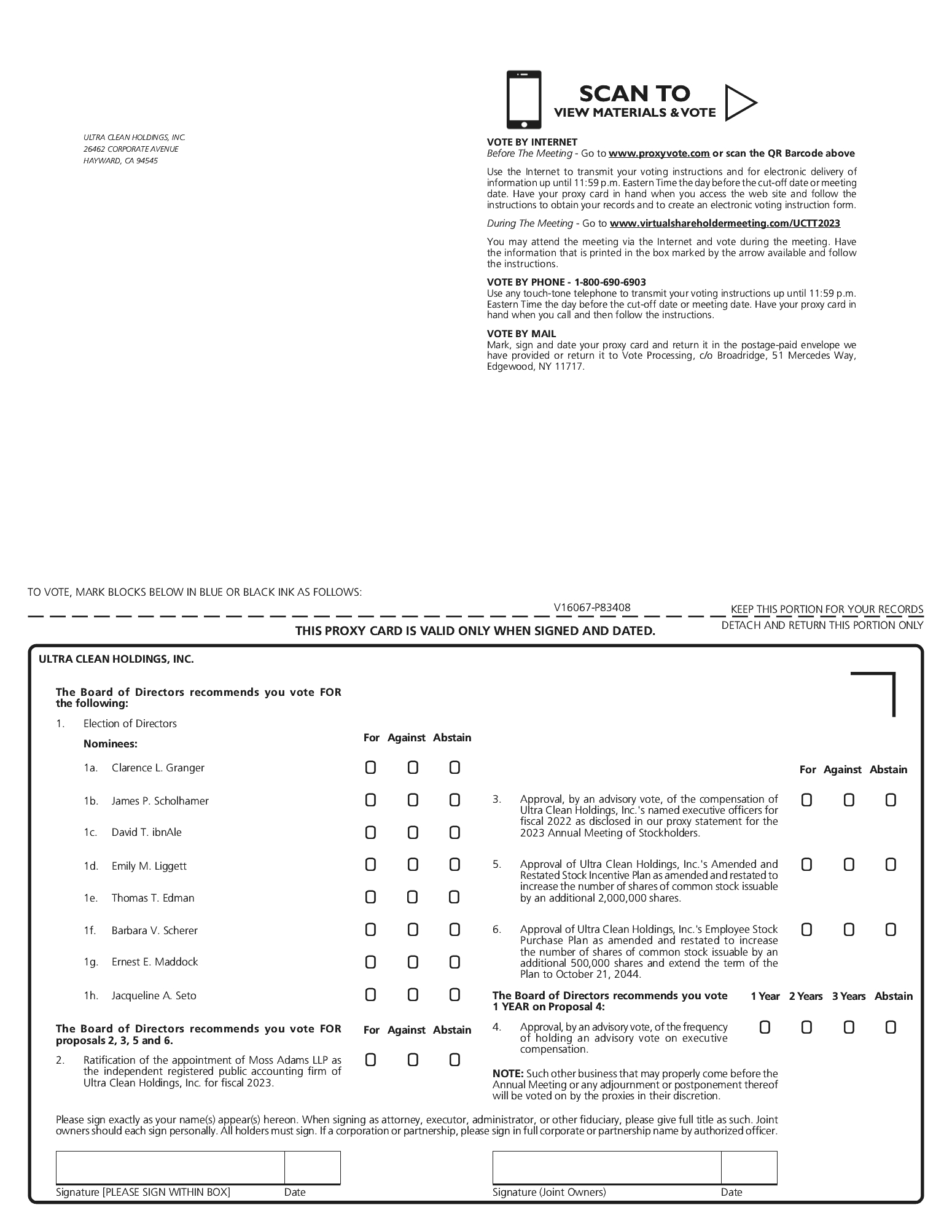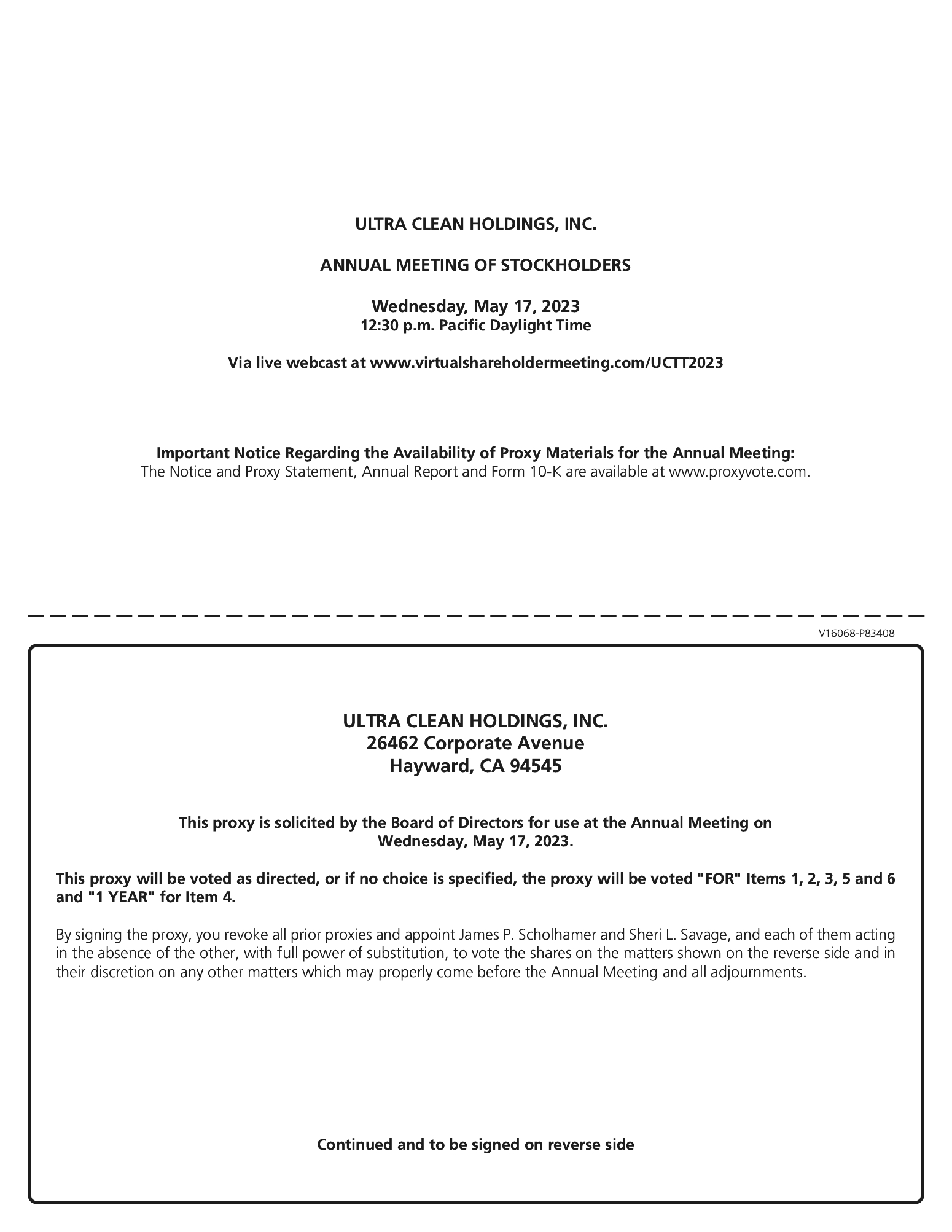Filed by the Registrant ☒ | | | |
Filed by a Party other than the Registrant ☐ | | |
☐ | | | Preliminary Proxy Statement |
☐ | | | Confidential, for Use of the Commission Only (as permitted by Rule 14a-6(e)(2)) |
| ☒ | | | Definitive Proxy Statement |
| | | Definitive Additional Materials | |
☐ | | | |
Soliciting Material Pursuant to §240.14a-12 |
| ☒ | | | No fee required. | |||
| | | |||||
Fee paid previously with preliminary materials. | ||||||
☐ | | | Fee computed on table in exhibit required by Item 25(b) per Exchange Act Rules 14a-6(i)(1) and 0-11. | |||

Purposes: |
• Elect our directors |
• Ratify the appointment of 2024 |
• Hold an advisory vote on executive compensation |
• Conduct other business that may properly come before the annual meeting or any adjournment or postponement thereof |
Adjournments or Postponements |
In the event of an adjournment, postponement or emergency that may change the annual meeting’s time, date or location, we will make an announcement, issue a press release or post information at www.uct.com/investors to notify stockholders, as appropriate. Information on or accessible through our website is not incorporated by reference in this Proxy Statement. |
Important Notice Regarding The Availability Of Proxy Materials For The Stockholder Meeting To Be Held On May |
Sincerely, |
/s/ James P. Scholhamer James P. Scholhamer Chief Executive Officer April |
 | | | Date: May Time: 12:30 p.m. Pacific |
Virtual Meeting: | |||
www.virtualshareholdermeeting.com/ UCTT2024 | |||
The Annual Meeting will be held in a virtual meeting format only. You will not be able to attend the Annual Meeting physically. To be admitted to the Annual Meeting at www.virtualshareholdermeeting.com/ | |||
Who Can Vote: | |||
March | |||
All stockholders are cordially invited to attend the meeting. At the meeting, you will hear a report on our business and have a chance to meet some of our directors and executive officers. | |||
 | | | VOTE ONLINE |
 | | | VOTE BY PHONE |
 | | | VOTE BY MAIL Sign, date and return your proxy card in the postage-paid envelope. |
 | | | VOTE DURING THE MEETING Whether you expect to attend the meeting or not, please vote electronically via the Internet or by telephone or by completing, signing and promptly returning the enclosed proxy card in the enclosed postage-prepaid envelope. You may change your vote and revoke your proxy at any time before the polls close at the meeting by following the procedures described in the accompanying proxy statement. |
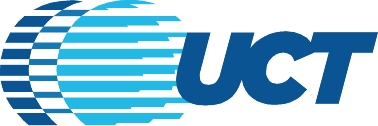
1 |
2 |
| 3 |
| | | SHARES OF COMMON STOCK BENEFICIALLY OWNED | ||||
NAME AND ADDRESS OF BENEFICIAL OWNER | | | NUMBER | | | PERCENT |
Greater than 5% Stockholders | | | | | ||
BlackRock, Inc.(1) | | | 8,043,181 | | | 18.0% |
55 East 52nd Street | | | | | ||
New York, NY 10055 | | | | | ||
The Vanguard Group(2) | | | 3,607,710 | | | 8.1% |
100 Vanguard Boulevard | | | | | ||
Malvern, PA 19355 | | | | | ||
Swedbank Robur Fonder AB(3) | | | 3,000,000 | | | 6.7% |
SE-105 34 | | | | | ||
Stockholm, Sweden | | | | | ||
Dimensional Fund Advisors L.P. (4) | | | 2,301,761 | | | 5.1% |
6300 Bee Cave Road | | | | | ||
Austin, TX 78746 | | | | | ||
Named Executive Officers, Directors and Director Nominees | | | | | ||
James P. Scholhamer(5) | | | 349,544 | | | * |
Sheri L. Savage(6) | | | 58,925 | | | * |
Vijayan S. Chinnasami(7) | | | 144,468 | | | * |
Christopher S. Cook(8) | | | 7,126 | | | * |
Jeffrey L. McKibben(9) | | | 6,764 | | | * |
Clarence L. Granger(10) | | | 91,838 | | | * |
Thomas T. Edman(10) | | | 28,900 | | | * |
David T. ibnAle(10) | | | 51,600 | | | * |
Emily M. Liggett(10) | | | 35,631 | | | * |
Ernest E. Maddock(10) | | | 29,100 | | | * |
Barbara V. Scherer(10) | | | 44,600 | | | * |
Jacqueline A. Seto(10) | | | 11,809 | | | * |
All Executive Officers and Directors as a Group (16 persons)(11) | | | 927,639 | | | 2.1% |
| | | SHARES OF COMMON STOCK BENEFICIALLY OWNED | ||||
| NAME AND ADDRESS OF BENEFICIAL OWNER | | | NUMBER | | | PERCENT |
| Greater than 5% Stockholders | | | | | ||
BlackRock, Inc.(1) | | | 7,201,258 | | | 16.1% |
55 East 52nd Street | | | | | ||
| New York, NY 10055 | | | | | ||
The Vanguard Group(2) | | | 4,360,555 | | | 9.8% |
| 100 Vanguard Boulevard | | | | | ||
| Malvern, PA 19355 | | | | | ||
Dimensional Fund Advisors L.P.(3) | | | 2,750,042 | | | 6.2% |
| 6300 Bee Cave Road | | | | | ||
| Austin, TX 78746 | | | | | ||
Frontier Capital Management(4) | | | 2,559,943 | | | 5.7% |
| 99 Summer Street | | | | | ||
| Boston, MA 02110 | | | | | ||
Swedbank Robur Fonder AB(5) | | | 2,434,224 | | | 5.5% |
| SE 105 34 | | | | | ||
| Stockholm, Sweden | | | | | ||
| Named Executive Officers, Directors and Director Nominees | | | | | ||
James P. Scholhamer(6) | | | 359,192 | | | * |
Sheri L. Savage(7) | | | 61,506 | | | * |
Vijayan S. Chinnasami(8) | | | 140,000 | | | * |
Christopher S. Cook(9) | | | 13,347 | | | * |
Jeffrey L. McKibben(10) | | | 8,228 | | | * |
Clarence L. Granger(11) | | | 97,134 | | | * |
Thomas T. Edman(11) | | | 34,196 | | | * |
David T. ibnAle(11) | | | 56,896 | | | * |
Emily M. Liggett(11) | | | 37,226 | | | * |
Ernest E. Maddock(11) | | | 34,396 | | | * |
Barbara V. Scherer(11) | | | 49,896 | | | * |
Jacqueline A. Seto(11) | | | 17,105 | | | * |
All Executive Officers and Directors as a Group (16 persons)(12) | | | 976,972 | | | 2.2% |
| * | Less than 1%. |
| (1) | Based on a Schedule 13G filed on January |
| (2) | Based on a Schedule 13G filed with the SEC on February |
| (3) | Based on a Schedule 13G filed with the SEC on |
| 4 |
| (4) | Based on a Schedule 13G filed with the SEC on February |
| (5) | Based on a Schedule 13G filed with the SEC on January 25, 2024 for the period ended December 29, 2023. |
| (6) | Includes (i) |
| Includes (i) |
| No restricted stock units are scheduled to vest. |
| (9) | Includes (i) |
| Includes |
| Includes |
| Consists of shares beneficially owned by our current executive officers and directors as of March 1, |
| 5 |
•By telephone: | | | 510-576-4400 |
•By fax: | | | 510-576-4401 |
•In writing at our principal executive offices: | | | Ultra Clean Holdings, Inc. Attn: Secretary 26462 Corporate Avenue Hayward, CA 94545 |
6 |
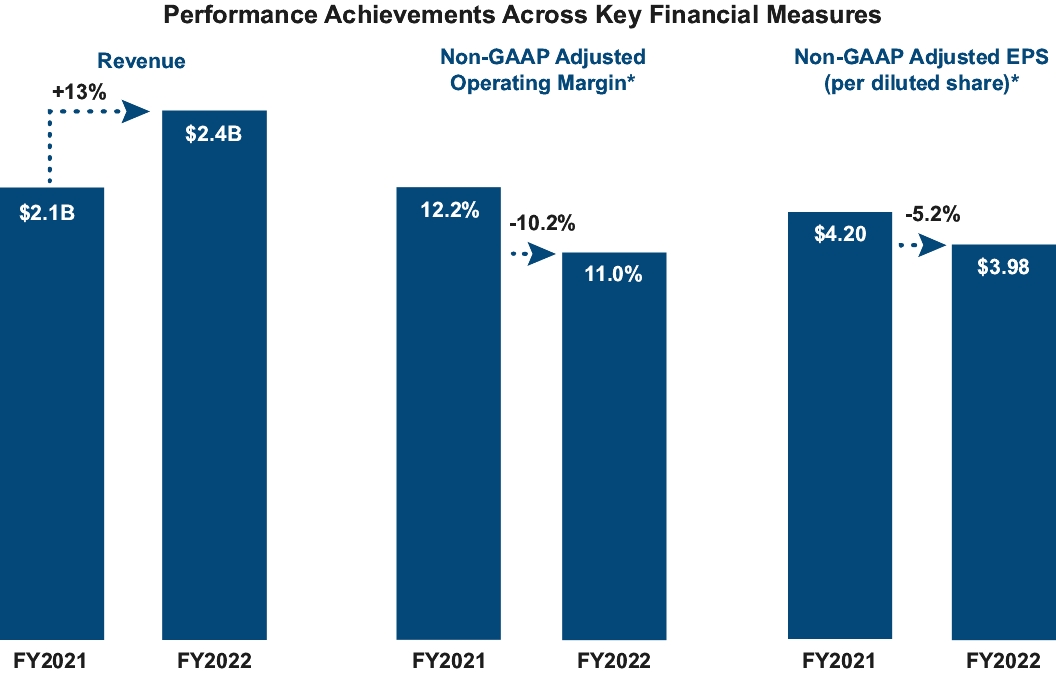

| 7 |
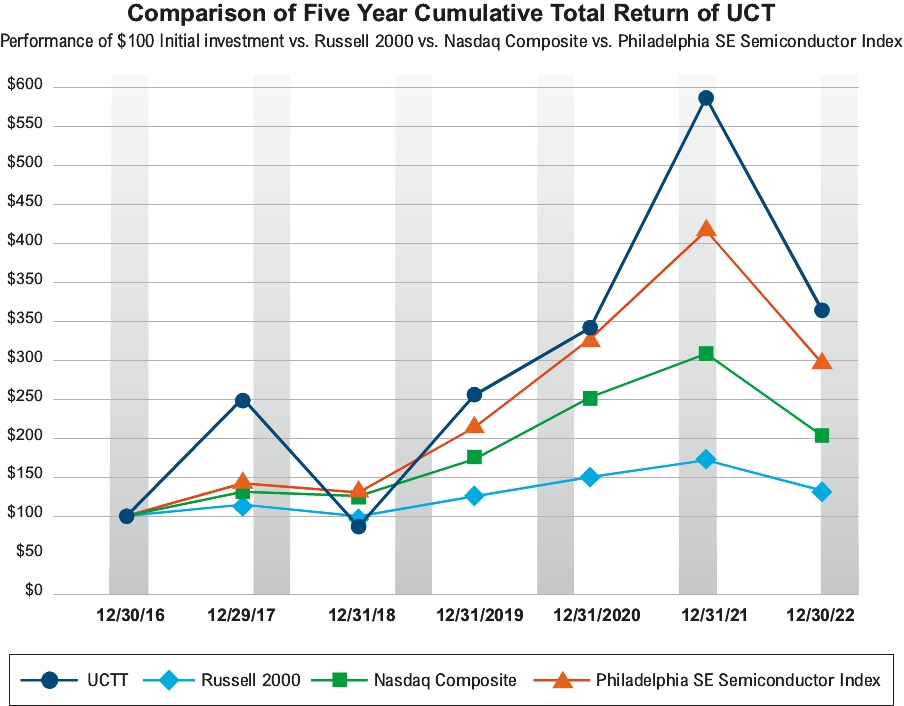
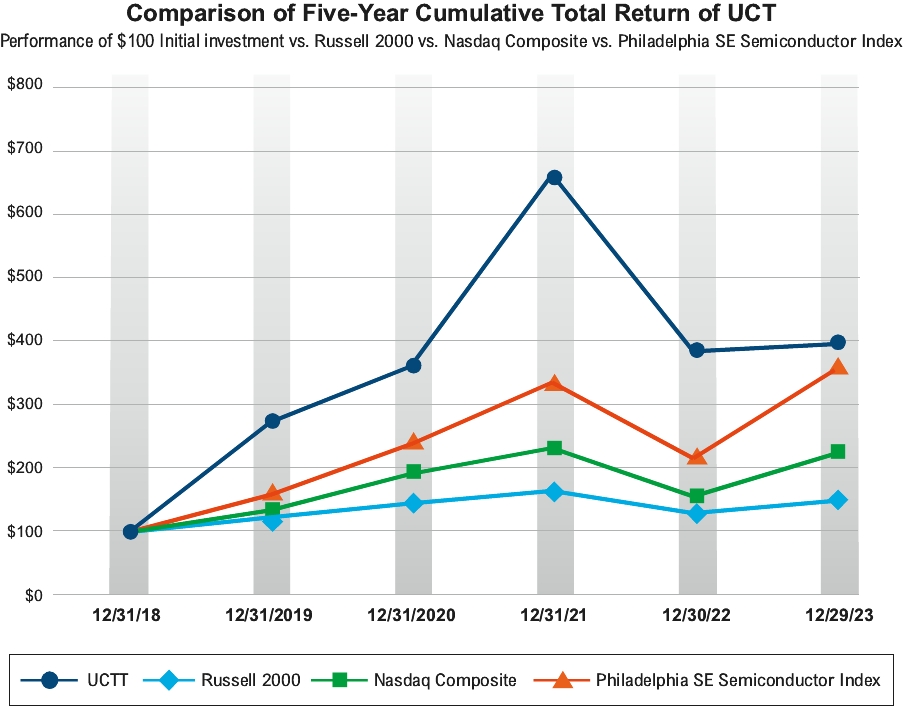
| 8 |
| | | YEARS ENDED | | | | | ||||||
| | | 12/31/2022 | | | 12/30/2021 | | | INCREASE (DECREASE) | | | % INCREASE (DECREASE) | |
| | | (DOLLARS ARE IN MILLIONS) | ||||||||||
Revenues | | | $2,374.3 | | | $2,101.6 | | | $272.7 | | | 13.0% |
Gross margin | | | 19.6% | | | 20.5% | | | (0.9)% | | | (4.5)% |
Non-GAAP gross margin* | | | 20.2% | | | 21.4% | | | (1.2)% | | | (5.4)% |
Income from operations | | | $120.4 | | | $185.7 | | | $(65.3) | | | (35.2)% |
Non-GAAP income from operations* | | | $260.2 | | | $257.3 | | | $2.9 | | | 1.1% |
Operating cash flow | | | $47.2 | | | $211.6 | | | $(164.4) | | | (77.7)% |
Market capitalization at fiscal year end | | | $1,497.1 | | | $2,577.4 | | | $(1,080.3) | | | (41.9)% |
| | | YEARS ENDED | | | | | ||||||
| | | 12/29/2023 | | | 12/31/2022 | | | INCREASE (DECREASE) | | | % INCREASE (DECREASE) | |
| | | (DOLLARS ARE IN MILLIONS) | ||||||||||
| Revenues | | | $1,734.5 | | | $2,374.3 | | | $(639.8) | | | (26.9)% |
| Gross margin | | | 16.0% | | | 19.6% | | | (3.6)% | | | (18.4)% |
| Non-GAAP gross margin* | | | 16.6% | | | 20.2% | | | (3.6)% | | | (17.8)% |
| Income from operations | | | $35.2 | | | $120.4 | | | $(85.2) | | | (70.8)% |
| Non-GAAP income from operations* | | | $85.3 | | | $260.2 | | | $(174.9) | | | (67.2)% |
| Operating cash flow | | | $135.9 | | | $47.2 | | | $88.7 | | | 187.9% |
| Market capitalization at fiscal year end | | | $1,524.2 | | | $1,497.1 | | | $27.1 | | | 1.8% |
| * | Non-GAAP |
NAME | | | POSITION/OFFICE HELD WITH THE COMPANY | | | AGE | | | DIRECTOR SINCE |
Clarence L. Granger | | | Chairman of the Board and Nominee for Director | | | 74 | | | 2002 |
James P. Scholhamer | | | Chief Executive Officer, Director and Nominee for Director | | | 56 | | | 2015 |
David T. ibnAle | | | Director and Nominee for Director | | | 51 | | | 2002 |
Emily M. Liggett | | | Director and Nominee for Director | | | 67 | | | 2014 |
Thomas T. Edman | | | Director and Nominee for Director | | | 60 | | | 2015 |
Barbara V. Scherer | | | Director and Nominee for Director | | | 67 | | | 2015 |
Ernest E. Maddock | | | Director and Nominee for Director | | | 65 | | | 2018 |
Jacqueline A. Seto | | | Director and Nominee for Director | | | 57 | | | 2020 |
| NAME | | | POSITION/OFFICE HELD WITH THE COMPANY | | | AGE | | | DIRECTOR SINCE |
| Clarence L. Granger | | | Chairman of the Board and Nominee for Director | | | 75 | | | 2002 |
| James P. Scholhamer | | | Chief Executive Officer, Director and Nominee for Director | | | 57 | | | 2015 |
| David T. ibnAle | | | Director and Nominee for Director | | | 52 | | | 2002 |
| Emily M. Liggett | | | Director and Nominee for Director | | | 68 | | | 2014 |
| Thomas T. Edman | | | Director and Nominee for Director | | | 61 | | | 2015 |
| Barbara V. Scherer | | | Director and Nominee for Director | | | 68 | | | 2015 |
| Ernest E. Maddock | | | Director and Nominee for Director | | | 66 | | | 2018 |
| Jacqueline A. Seto | | | Director and Nominee for Director | | | 58 | | | 2020 |
Total Number of Directors | | | 8 |
| | | FEMALE | | | MALE | | | NON-BINARY | | | DID NOT DISCLOSE GENDER | |
| Part I: Gender Identity | | | | | | | | | ||||
| Directors | | | 3 | | | 5 | | | | | ||
| Part II: Demographic Background* | | | | | | | | | ||||
| African American or Black | | | | | 1 | | | | | |||
| Alaskan Native or Native American | | | | | | | | | ||||
| Asian | | | 1 | | | | | | | |||
| Hispanic or Latinx | | | | | | | | | ||||
| Native Hawaiian or Pacific Islander | | | | | | | | | ||||
| White | | | 1 | | | 3 | | | | | ||
| Two or More Races or Ethnicities | | | 1 | | | | | | | |||
| LGBTQ+ | | | | | 1 | | | | | |||
| Did Not Disclose Demographic Background | | | | | | | | |
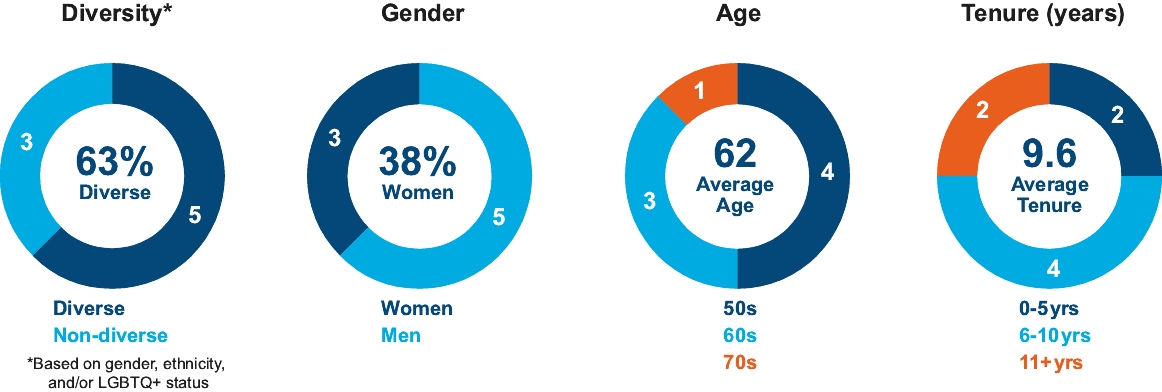

 | | | Clarence L. Granger — Chairman and Independent Director Director since 2002 Age: Key qualifications and expertise considered by the Board in nominating this director: • Extensive knowledge of UCT’s business, strategy, people, operations, finances and competitive position in the semiconductor capital equipment industry as our former CEO • Executive leadership and vision • Global network of customer, industry and government relationships |
Clarence L. Granger has served as our Chairman since October 2006. From 1996 to 2015, Mr. Granger served in multiple roles with UCT including Chief Operating Officer and Executive Vice President of Operations, culminating with 12 years as our Chief Executive Officer. Before joining UCT, Mr. Granger held executive management roles at Seagate Technology, HMT Technology and Xidex, including the position of Chief Executive Officer for HMT Technology. Mr. Granger has a B.S. in Industrial Engineering from the University of California at Berkeley and an M.S. in Industrial Engineering from Stanford University. | |||
 | | | James P. Scholhamer — Chief Executive Officer and Director Director since 2015 Age: Key qualifications and expertise considered by the Board in nominating this director: • Strong engineering and operations experience • Provides the Board of Directors with a unique perspective as Chief Executive Officer and leader of our strategic planning process |
Before joining UCT as Chief Executive Officer in 2015, James P. Scholhamer served as Corporate Vice President and General Manager of Applied Materials, Inc., leading the Equipment Products Group and Display Services Group of its Global Service Division. Earlier at Applied Materials, Mr. Scholhamer served as Vice President of Operations-Energy for the Environmental and Display Products Division and Corporate Vice President and General Manager of the Display Business Group. Prior to joining Applied Materials, Mr. Scholhamer worked for Applied Films Corporation as Vice President of Operations, Engineering and Research Development and as Vice President of Thin Film Coating Division and Thin Film Equipment Division. Mr. Scholhamer holds a B.S. in Materials and Metallurgical Engineering from the University of Michigan. | |||
 | | | David T. ibnAle — Independent Director Director since 2002 Age: Key qualifications and expertise considered by the Board in nominating this director: • Expertise in corporate finance, accounting and strategy • Brings a thorough understanding of business management, including investment, corporate strategy and mergers and acquisitions to UCT’s growth initiatives • Qualifies as a financial expert and provides important support as a member of our Audit Committee |
David T. ibnAle is a Founding and Managing Partner of Advance Venture Partners LLC. He has | |||
 | | | Emily Liggett — Independent Director Director since 2014 Age: Key qualifications and expertise considered by the Board in nominating this director: • CEO and management experience in a variety of technical industrial companies • International perspective; has managed worldwide businesses, partnerships, and international joint ventures • Expertise in strategy, operations, new product development, sales, marketing, and business development for highly technical businesses |
Emily Liggett is the Founder and Chief Executive Officer of Liggett Advisors, a strategy/implementation consulting business, since 2017. Previously, Ms. Liggett was CEO of NovaTorque, Inc., CEO of Apexon, CEO of Capstone Turbine and CEO of Elo TouchSystems. Before these roles, she held assignments in sales, marketing, operations and general management at Raychem Corporation, including GM of the Raychem Telecommunications Division. Ms. Liggett is presently a director of Materion Corporation. She was previously a director of Kaiser Aluminum, MTS Systems Corporation and of Immersion Corporation, and serves on the Purdue Research Foundation Board of Directors. As a board member, Ms. Liggett has developed expertise in oversight of corporate sustainability matters including environmental, social and governance best practices and implementation. Ms. Liggett has a B.S. in Chemical Engineering from Purdue University, an M.S. degree in Manufacturing Systems and an M.B.A. from Stanford University. | |||
 | | | Thomas T. Edman — Independent Director Director since 2015 Age: Key qualifications and expertise considered by the Board in nominating this director: • Business acumen and experience in the technology industry with sizeable companies, including as CEO of a public company • Extensive experience in Asia and with compensation matters |
Thomas T. Edman is currently Chief Executive Officer of TTM Technologies Inc. since 2014 and has been a member of its Board of Directors since 2004. Mr. Edman held multiple management roles at Applied Materials Inc., including Group Vice President and General Manager of the AKT Display Business Group and Corporate Vice President of Corporate Business Development. Before that he served as President and CEO of Applied Films Corporation and also as General Manager of the High Performance Materials Division of Marubeni Specialty Chemicals Inc. Mr. Edman is currently the | |||
 | | | Barbara V. Scherer — Independent Director Director since 2015 Age: Key qualifications and expertise considered by the Board in nominating this director: • Extensive experience in the technology industry, including significant operational expertise • Practical and strategic insight into complex financial reporting and management issues |
Barbara V. Scherer’s career spans more than 30 years, including 25 years in senior financial leadership roles in the technology industry. Previously, she was Senior Vice President, Finance and Administration and Chief Financial Officer of Plantronics Inc. from 1998 to 2012. Before Plantronics, she held executive management positions spanning 11 years in the disk drive industry, was an associate with The Boston Consulting Group and was a member of the corporate finance team at ARCO. Ms. Scherer is a member of the Board of Directors of NETGEAR Inc. a former chair of the audit committee and current chair of the compensation committee. She | |||
 | | | Ernest E. Maddock — Independent Director Director since 2018 Age: Key qualifications and expertise considered by the Board in nominating this director: • Practical and strategic insight into complex financial reporting and management issues • Significant operational expertise • Knowledge of critical drivers across the semiconductor ecosystem |
Ernest E. Maddock has held leadership positions at multiple global companies during his career. Mr. Maddock served as Senior Vice President and Chief Financial Officer at Micron Technology from 2015 until his retirement in 2018. Prior to joining Micron, Mr. Maddock served as Executive Vice President and Chief Financial Officer of Riverbed Technology. Before joining Riverbed, he spent 15 years at Lam Research Corporation (“Lam”), rising to Executive Vice President and Chief Financial Officer. His previous roles at Lam included Vice President, Customer Support Business Group; and Group Vice President and Senior Vice President of Global Operations. Currently, Mr. Maddock serves on the Board of Directors of Avnet, Inc., Ouster Inc., Teradyne, Inc., and previously served as a member of the Board of Directors for Intersil Corporation. Mr. Maddock holds a B.S. in Industrial Management from the Georgia Institute of Technology and an M.B.A. from Georgia State University. | |||
 | | | Jacqueline A. Seto — Independent Director Director since 2020 Age: Key qualifications and expertise considered by the Board in nominating this director: • Deep understanding of the semiconductor industry • Proven strategic insight • Extensive experience in product strategy and marketing |
Jacqueline A. Seto is currently Principal of Side People Consulting, partnering with emerging companies and with non-profit organizations advising on strategic and business planning, change management and other executive service consulting. Previously, Ms. Seto spent 22 years at Lam Research, where she advanced to the position of Group Vice President and General Manager of the Clean Business Unit. Her previous roles at Lam included Corporate Vice President and General Manager in the Reliant Business Unit, Vice President of Product and Strategic Marketing and Managing Director of Emerging Businesses. Ms. Seto currently serves as a member of the Board of Trustees for The Oregon Museum of Science and Industry, and as a member of the Board of Directors for the International Women’s Forum Oregon. She previously served as a member of the Board of Directors for TriAegis Residential Services, for Mastersranking.com and as the Board Secretary of Prevent Child Abuse Oregon. As a board member, Ms. Seto has developed expertise in oversight of corporate sustainability matters including environmental, social and governance best practices and implementation. Ms. Seto holds a Bachelor of Engineering in Chemical Engineering from McGill University. | |||
 | | | Our Board of Directors recommends that you vote “FOR” each of the nominees to the Board of Directors set forth in this Proposal 1. |
 | | | UCT is committed to sustainable solutions that minimize our environmental impact and support our long-term success. As a growing, global company, UCT is continuously improving and expanding the scope of our environmental efforts. Our We have a goal of zero environmental impact incidents. Our performance against this policy is monitored via reviews and audits. |
| | | OUR EFFORTS TO ADVANCE INDUSTRY-WIDE SOLUTIONS UCT is committed to “SuCCESS2030” (Supply Chain Certification for Environmental and Social Sustainability) We also subscribe to the RBA’s Responsible Mineral Initiative, which establishes standards for environmentally responsible and ethical business practices in the electronics industry and its supply chain. In 2022, we successfully submitted the Conflict Minerals Reporting Template and Extended Minerals Reporting Template as part of our commitment to In 2022, UCT became a Founding Member of the Semiconductor Climate Consortium • Collaboration – Align on common approaches, technology innovations and communications channels to continuously reduce greenhouse gas emissions. |
| | | • Transparency – Publicly report progress and Scope 1, 2 and 3 emissions annually. • Ambition – Set near- and long-term decarbonization targets with the aim of reaching net zero emissions by 2050. | |
| | | SCC founding members are committed to driving climate progress within the semiconductor industry and support the Paris Agreement and related accords aimed at accelerating and intensifying the actions and investments required for a sustainable low-carbon future. | |
| | | Additionally, we are actively engaged with various industry efforts offered by our key customers, such as the Catalyze program that aims at furthering the adoption of renewable electricity throughout the global semiconductor value chain. | |
| | | To support our ambition, UCT is Other highlights: | |
| | | ENERGY EFFICIENT OPERATIONS Increased efficiency can lower • UCT incorporates energy efficiency considerations into our capacity expansions. For example, our newest facilities in Ireland and Malaysia include infrastructure to support planned solar installations that will reduce our energy consumption over time. In addition, the site design of our recently opened state-of-the-art facility in Chandler, Arizona follows Leadership in Energy and Environmental Design (“LEED”) certification guidelines. We • | |
| | | RESPONSIBLE USE OF RESOURCES UCT recognizes that the responsible use of natural resources is essential to sustainably growing our business and protecting the • UCT follows RBA’s Responsible Minerals Assurance Process for tantalum. Tantalum is a rare metal commonly used in the electronics industry where high reliability in extreme environments is required. Tantalum is covered by regulations related to “conflict minerals” in the United States and the European Union. • Our Environmentally Clean Process (“ECP”) for tantalum-deposited parts recover up to 95% of the metal, enabling it to re-enter the commodity market and reduce the demand for mined material. • ECP also increases part lifetime and reduces wastewater generation while eliminating the use of chemicals at some of our high-volume cleaning facilities. • UCT acknowledges our duty to protect water sources in the communities in which we operate and strives to conserve water use across our global operations by sharing best practices among sites. • In 2023, we launched a survey with our suppliers on their awareness and level of adoption of ESG principles. Additionally, we are working with our suppliers on perfluoroalkyl and polyfluoroalkyl substances (“PFAS”) risk and possible alternate solutions. |
| 16 |
| | | REDUCING CHEMICAL USE UCT’s parts cleaning business uses chemical-free processes where possible. This lowers our environmental impact by reducing the amount of waste requiring treatment and enabling the safe return of water to the environment. | |
| | | MINIMIZING WASTE UCT is committed to reducing waste across our locations to limit our environmental footprint. We have implemented reuse programs for packaging materials with our customers and suppliers, adhering to the semiconductor industry’s stringent protective packaging requirements. | |
| | | REDUCING TRANSPORTATION To reduce our overall emissions, UCT seeks to minimize transportation emissions wherever possible among our operations, and with our suppliers and employees. Many of UCT’s sites are strategically positioned close to our customers, which reduces the distance products must travel. Where possible, we develop regional supply chains that reduce overall shipping requirements. |
 | | | We aim to build a responsible and sustainable end-to-end supply chain, ensure employee health and safety in the workplace, foster an atmosphere of acceptance, inclusion, belonging, trust and mutual respect in the workplace, promote employee engagement inside and outside the company and give back to communities. UCT strives to positively impact society by ensuring the people we work with are safe and treated with dignity and respect. We strive to be a good neighbor in the communities in which we operate. |
| | | HEALTH, WELLNESS AND SAFETY • The safety of our personnel is our top priority. We have an established Safety policy to outline expectations, including our goal of zero accidents and injuries. Safety incident levels across our Products and Services Divisions are consistently below industry benchmarks. • We consistently train, educate and qualify personnel to enable a safety-focused work environment. | |
| | | • We subscribe to the Responsible Business Alliance (“RBA”) Responsible Labor Initiative, which establishes standards to ensure that working conditions in the electronics industry and its supply chains are safe and that workers are treated with respect and dignity. | |
| | | • We require written certification from strategic direct product suppliers that the materials incorporated into their products comply with applicable laws and regulations, including laws regarding slavery and human trafficking of the country or countries in which they are doing business. | |
| | | DIVERSITY, INCLUSION AND ENGAGEMENT Central to UCT’s values is the belief that employees are our most important assets. Our goal is to foster an atmosphere of acceptance, inclusion, belonging, trust and respect for all. We embrace diversity and multiculturalism. We respect regional differences while fostering a culture that maximizes both organizational and individual potential. Our culture emphasizes leadership, open and honest communication, training and mentoring, and a positive reward system. • Diversity initiatives are overseen by our executive management team, including efforts to recruit from a broad talent base and initiatives to support a more inclusive workforce. • • Our employees take mandatory training to establish behavioral expectations, improve |
| 17 |
| | | diversity and inclusion sentiment, and ensure that every employee is treated with dignity and respect. • In 2022, UCT completed a diversity survey of our employees holding the title vice president or higher; with 100% participation, 61% of these senior leaders self-identified as female and/or minorities. We are currently developing a framework to broaden our efforts to monitor diversity across all levels of the company. • UCT launched a company-wide learning management system (LMS) in 2022 that provides all employees with opportunities to advance their skills, knowledge and careers. Course offerings include leadership and professional skills, diversity and inclusion training, project management certification, environmental, health and safety courses and more. |
• We are committed to the success of our employees. In • In 2023, UCT introduced specialized training for high-potential employees to enhance individual leadership capabilities and foster a culture of continuous improvement and innovation. • We actively solicit the input of our employees as part of our efforts to make UCT an attractive place to work and to enhance recruiting and retention. In 2022, the results of a company-wide survey revealed that 76% of our employees would recommend UCT as a good place to work. | |||
| | | We are committed to contributing to the communities in which we operate and support our employees who participate in local events through the investment of time and resources. In |
 | | | Sound governance and strong leadership are key to delivering sustained value to our stakeholders. To succeed, we must safeguard and retain the trust of employees, partners, customers, investors and the communities in which we work and live. As stewards of the company, our Board of Directors provides guidance and oversight and ensures that we maintain our high ethical standards. Effective corporate governance requires achieving the right mix of experience, background and diversity in perspectives; this is particularly important in a complex and highly technical business like ours. For more information on board diversity, please see page We benefit from a highly engaged and informed Board of Directors. Our board composition complies with Nasdaq and Securities and Exchange Commission rules regarding director independence and Given the importance of ESG considerations, • The Nominating, Environmental, Social and Corporate Governance Committee (formerly the Nominating and Corporate Governance Committee) provides oversight and guidance for ESG matters focusing on environmental and governance areas. • The Compensation and People Committee (formerly the Compensation Committee) provides oversight and guidance for the social component of ESG, including talent and career development, employee retention, promotion of diversity, equity and inclusion and other people-related matters. |
| 18 |
| | | These committees meet regularly and provide input and guidance for consideration of environmental, social and governance matters to the broader board on a regular | |
| | | CYBERSECURITY Managing cyber-risk is increasingly critical to governance in today’s interconnected world. UCT has a Chief Information Officer and a Chief Information Security Officer (“CISO”), who report Our senior management and information technology security teams devote considerable time and resources to conducting regular evaluations of our systems and implementing necessary enhancements to our security infrastructure to better guard against evolving cybersecurity threats. Our employees, contractors and directors receive regular information security training and participate in ongoing, mandatory cybersecurity awareness programs. |
| 19 |
